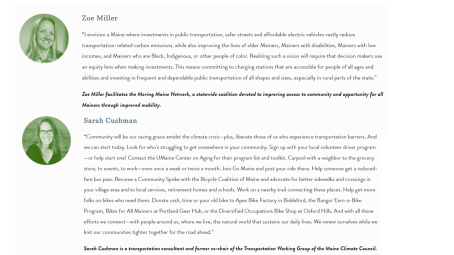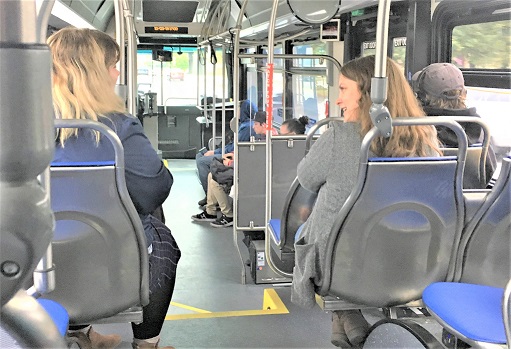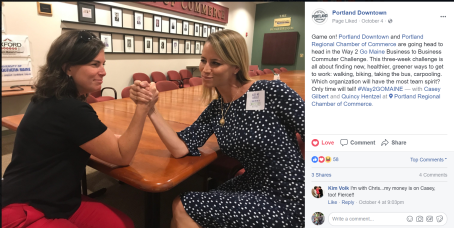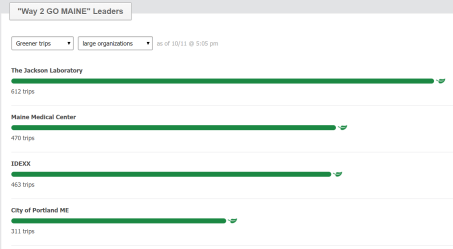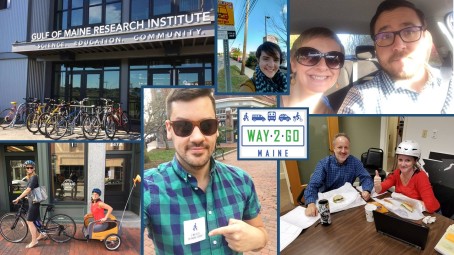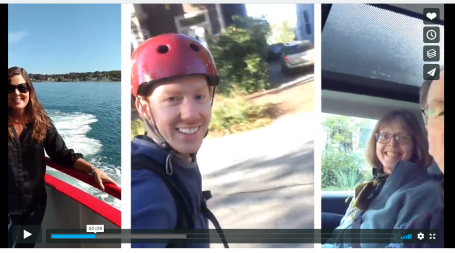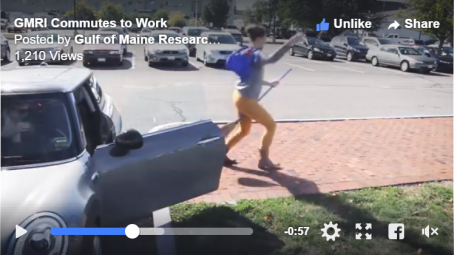Helping People Have Happy Commutes, Improving Quality of Life
Is your organization interested in collaborating on a pedestrian, bicycle or transportation demand management project or program?
Or are you dealing with employee commuting and/or parking issues at your business or organization? Wondering how to get started (or get your employees started) doing more walking, biking, carpooling, telecommuting or taking public transit?
Owned and operated by Sarah Cushman (she/her) – a transportation planner, educator, consultant and former ASE Master-Certified auto mechanic – Cushman Transportation Consulting, LLC serves as a source of solid information and help with transportation planning, promotion, choice-making and changes.
Sarah offers:
- Pedestrian, bicycle and Transportation Demand Management project and program assistance
- Exploration of individual and organizational transportation needs, financial impacts and solutions
- Training and consultations for using – and planning for and encouraging the use of – active transportation (biking, carpooling, taking public transit, walking, telecommuting, etc.)
- Environmentally-responsible and financially savvy car maintenance and driver education
The bad news we all know: heavy financial burdens are being put on businesses and tax-payers for roads and parking, fuel costs are tough to manage, middle-income earners spend 30% of their income on transportation (and lower-income households spend 40% on average), drive-alone commutes are hard on mental and physical health, and 40% of local air pollution and 54% of climate-changing carbon emissions come from transportation sources.
The good news is that we – as organizations and as individuals – have practical transportation options that save us money, improve our mental and physical health, and make our communities more livable.
Let’s talk about the possibilities for your particular situation. Together we can create happier commutes and an improved quality of life.
Transportation Equity as Part of Maine’s Climate Vision – Green & Healthy Maine Homes Magazine
Thanks very much for the efforts of journalist, Amy Paradysz, and Green & Healthy Maine Homes Magazine in putting together the Vision 2050 reporting on the state’s climate efforts in their Spring 2023 edition.
It was an opportunity for both me and colleague Zoe Miller of the Moving Maine Network to share a bit more about the intersections between climate mitigation and transportation justice efforts – and what regular folks like each of us can do. Other great state actors weighed in on similar topics as well.
You can read the multi-article layout in detail here. Scroll down to see what Zoe and I shared near the end.
Transportation Options for All
Local and state transportation options programs, such as GO MAINE, have increased their work on equity and mobility in recent years. (These programs are also known traditionally as “commuter assistance” or “Transportation Demand Management”, a.k.a., TDM.) One example is GO MAINE’s statewide multimodal Trip Planner that was first launched in March 2020 but (understandably) not promoted widely because of concerns about the safety of carpooling during the pandemic. The trip planner allows people to find various transportation options including carpools, bike and transit routes, park and ride lots, and electric vehicle charging locations. The planner also includes the ability to form carpools for “one time” rides to events or destinations, such as concerts and state parks. In addition, it enables local ride-matching for volunteer drivers with people who need rides, for example for shopping and medical trips. [Full disclosure: Cushman Transportation Consulting, LLC (CTC) has consulted with GO MAINE on special projects since 2017.]
However, the pandemic has revealed starkly how much previous transportation options efforts across North America have been geared most toward those who have easy access to private vehicles – and who are most likely to be able to work from home. At the same time, while carpooling and public transportation use have been down as much as 75-85% during Covid, more than one TDM practitioner quotes the current understanding that, “You may not depend on transit, but you probably depend on someone who does.”
Cushman Transportation Consulting, LLC as a firm carries an ongoing concern for mobility access and justice efforts. Sarah Cushman, principal at CTC, has worked over the years with projects such as the ACLU of Maryland’s cases regarding Driving While Black on I-95 and the U.S. Route 50 construction that destroyed an African American neighborhood in Salisbury, MD – as well as the Citizen’s Planning & Housing Association’s work with Baltimore’s Transit Riders League. As an auto mechanic, Sarah worked regularly with customers struggling to afford to keep their vehicles on the road and seeking other transportation choices.
More recent consulting efforts include those with MaineDOT’s Safe Routes to School Program and the Heads Up! Vulnerable Populations Pilot Project. As a volunteer consultant, CTC is also assisting Greater Portland Council of Governments staff and local transit providers with a dialogue regarding barriers to using the new Dirigo transit pass that have come to light – for people with disabilities, with fewer financial resources, and/or who are English Language Learners.
In addition, there is CTC’s work with GO MAINE to help employers and workers who are looking for ways to reduce commute costs and find other ways to get to work. CTC has also been representing GO MAINE on the Moving Maine Network – and the firm is an active participant in the Transportation & Community Network, the Southern Maine arm of Moving Maine. The Moving Maine Network works to improve access to transportation for all Mainers, with a special focus on people who experience barriers. The Network is a multi-sector, statewide collaborative that facilitates better transportation access by advancing cross-sector coordination, informing policy change, and spurring innovation.
Moving Maine is in good company with many other local and national efforts. In every conversation with colleagues working on transportation options programs in other states and regions, it’s clear they are also seeing the need to work not only with the traditional Transportation Demand Management (TDM) base of people who have the choice to drive alone to work – but also with those who really need a ride. As one program manager puts it, “It needs to be TDM-for-all.” Another practitioner shares, “Do I want to keep selling the unwanted to the unwilling? How about selling the wanted to the willing, for whom it would really make a difference?”
|
“We don’t have a congestion problem and parking is free pretty much everywhere. You’re setting us up for failure if you base the program’s work on congestion. Job access, mobility, and climate – those are the more sustainable and compelling paths forward.” – Courtney Reynolds, Transit Planning Manager, VHB – former manager of ReThink Your Commute (Central Florida) and Southwest Florida Commuter Services – both funded primarily through the federal Congestion Mitigation and Air Quality Improvement Program |
Understanding that the Customer is the Most Central Actor
The customer – that is, anyone who lives and/or works in the program area – is actually the central actor in any transportation options program’s efforts. This means a program must do in-depth outreach to understand the lived experience and transportation needs of one’s customers across the spectrum – also known as their “jobs-to-be-done”. And in knowing people’s jobs-to-be-done, program staff can most effectively identify and connect folks with how the program might help.
| “People don’t want to buy a quarter-inch drill. They want a quarter-inch hole!” Theodore Levitt, Harvard Business School marketing professor Competing Against Luck: the story of innovation and customer choice, Christensen, Dillon, Hall & Duncan (2016) |
The program needs to consistently consult with – and ask and enable its central actors to participate in – the design and decisions about its services and marketing strategies.
|
“[t]he more we share our understanding of customers with our partners, the more we can bring others to support the work of improving mobility options…Transportation is integral to almost all activities that take place within a community. The ability of people to reach needed destinations impacts the viability of businesses, health and human services, economic development, local government, and more. Being able to articulate this relationship between transportation and success in other sectors is an important step in strengthening support for community transportation options.” National Center for Mobility Management |
Of course, “know thy customer” is the mantra in any social marketing and behavior change effort, including transportation options programs. It’s also incredibly important to meet different customers where they are on the Stages of Change continuum in terms of adopting new ways of getting around.
Living Our Values in the Work Itself
Last but certainly not least, it’s not just what work the program does in the world, but also how it does the work. Identifying and living by the program’s core equity values fosters a more resilient working culture. That is, people are able to work together and accomplish significantly more over the long-term.
Some content recommendations for a program’s Values Statement can be found here. As always, this should be a living document that people use in their day-to-day work. These principles also serve the program to lead by example to meet a state or region’s economic development and equity goals – such as those regarding economic class, race, age diversity, physical and cognitive ability, gender, and geographic representation.
There’s plenty of work to be done on so many levels. And at the same time, there’s so much opportunity for us to improve everyone’s mobility – which makes all of our lives better and our communities stronger.
Maine Monitor Article on Reducing the Number of Vehicle Miles We Travel
I had the pleasure of talking with Marina Schauffler of Natural Choices, LLC for a couple of climate-related transportation articles this month. I’ve always admired her in-depth journalism and Sea Change column in The Maine Monitor. It’s a joy to speak with someone who already knows so much about the issues and at the same time is open to and actively seeking additional perspectives.
Here’s the Sea Change column she just wrote on Maine’s need to reduce vehicle miles traveled, within the state’s rural and also pandemic contexts: “Driving seemed inescapable until it wasn’t.”

2020 Winner of GrowSmart Maine’s Outstanding Project Award
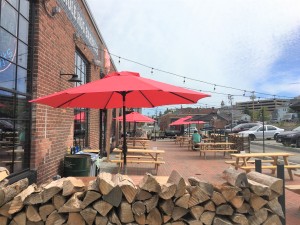 Congrats to Tom Watson & Port Property Management on the 2020 GrowSmart Maine Outstanding Project award for 82 Hanover Street in Portland!
Congrats to Tom Watson & Port Property Management on the 2020 GrowSmart Maine Outstanding Project award for 82 Hanover Street in Portland!
As Will Savage of Acorn Engineering, Inc. shared this month, “In 2017, the City of Portland released an RFP for the redevelopment of a former Public Works maintenance building at 82 Hanover Street, a brownfield site in a state of blight and disrepair. Port Property Management devised a plan to convert the site into a vibrant, pedestrian oriented, mixed-use commercial center.
Today, the project is fully occupied with a lively variety of local food, beverage, fitness, and service businesses…and all of the new social and economic activity at 82 Hanover has helped attract other investments to the neighborhood.”
As a Transportation Demand Management practitioner, it was a good planning challenge for me as part of the larger work of the extensive site team. I was a genuine pleasure to work on this project with Tom and his capable Port Property staff, plus Will Savage and Sam Lebel at Acorn and William Bray of Traffic Solutions – and all the rest of the smart and capable folks involved:
- Architect: Ryan Senatore, AIA LEED-AP BD+C
- Structural: Aaron Jones
- Environmental: Lucas J. Benedict & Mark Arienti – Acorn Environmental Services
- Surveyor: David Titcomb
- Select Interior Fit-up: Robert Barrett, Matthew Ahlberg
- Attorney: Hawley Strait
- City of Portland Planning Division: Nell Donaldson, Jodie Keene, Tuck O’Brien and Jeff Levine
What a good crew to bring important redevelopment visions like those of Tom’s into being. I appreciate everyone’s work!
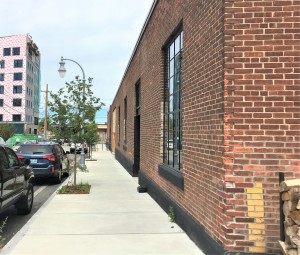 As the award description details the broader impacts, “Multiple new market-rate and affordable housing units, for rent and for sale, have recently been developed in the nearby vicinity and 200 additional units are in the planning phases for other adjacent lots. 82 Hanover is an example of how strong city leadership partnered with a visionary smart growth-oriented developer can provide the catalyst to transform a [semi] abandoned industrial block of town into a vibrant new neighborhood.”
As the award description details the broader impacts, “Multiple new market-rate and affordable housing units, for rent and for sale, have recently been developed in the nearby vicinity and 200 additional units are in the planning phases for other adjacent lots. 82 Hanover is an example of how strong city leadership partnered with a visionary smart growth-oriented developer can provide the catalyst to transform a [semi] abandoned industrial block of town into a vibrant new neighborhood.”
This includes Tom’s application this fall to the City for developing housing at adjacent 52 Hanover – which I’ve enjoyed as another great opportunity for creating a robust site Transportation Demand Management Plan.
Co-Chairing the Transportation Working Group of the Maine Climate Council
 Last September I was asked by Joyce Taylor, Chief Engineer at the Maine Department of Transportation, to join her as Co-Chair of the Transportation Working Group of the Maine Climate Council. A tremendous honor, even understanding from the beginning that we had our work cut out for us. (And while climate work is critical, I always say – only half joking – that 95% of the reason I said yes to co-chairing was to have the opportunity to work with Joyce, who’s skills and integrity I greatly admire.)
Last September I was asked by Joyce Taylor, Chief Engineer at the Maine Department of Transportation, to join her as Co-Chair of the Transportation Working Group of the Maine Climate Council. A tremendous honor, even understanding from the beginning that we had our work cut out for us. (And while climate work is critical, I always say – only half joking – that 95% of the reason I said yes to co-chairing was to have the opportunity to work with Joyce, who’s skills and integrity I greatly admire.)
The Maine Climate Council is the state’s newly legislated and ambitious process — thanks to Gov. Janet Mills’ leadership — to reduce greenhouse gas emissions (GHGs) by 45% by 2030 and 80% by 2050. The initiative intends to do this while at the same time working to address mobility and equity issues in a primarily rural region.
The broader Climate Council is a diverse group consisting of 39 members drawn from a cross-section of Maine government, business, and other stakeholder groups. The Council’s work is supported by the Governor’s Office of Policy Innovation and the Future and seven subcommittees, also known as working groups. In addition to transportation, these groups are looking at everything from science and technical needs, energy production and distribution, buildings and housing, natural and working lands, coastal and marine issues, and public health and emergency management. We all have been meeting regularly since October 2019 to come up with a series of recommendations to present to the larger Climate Council membership in June of this year.
In Maine, the transportation sector contributes the greatest amount of emissions by far, at 54% of our total GHG pie. Also of significance: of these transportation-related emissions, light-duty passenger cars and trucks produce 59% — well over the majority.
We’ve known for years that transportation is perhaps the hardest nut to crack in terms of climate efforts and culture change—and in some ways, this has led decision-makers to avoid dealing with it altogether. It’s the one sector where emissions have actually increased over time, versus the significant reductions that have been made in the energy sector, for example.
I have to admit I’ve been intimidated by this monster of a process at different points, especially putting it together as we go and on such a tight timeline. Kind of like dealing with climate change itself.
Our group also presents all the challenges of moving together and wrestling with things as a whole; altogether the group includes 30 members, another 30 support staff from the Maine Department of Transportation, Maine Department of Environmental Protection, and the Governor’s Office, plus diverse and interested members of the public.
As Joyce often points out, many of us haven’t worked together before now. And while a few members have worked specifically on climate initiatives, many of us have had to get more fully up to speed on the issues.
Each working group is made up of Climate Council members and additional stakeholder representatives. For example, our Transportation Working Group has four members who are also Climate Council members: Benedict Cracolici from Sappi North America, Matt Marks from the Association of General Contractors, Lori Parham from AARP Maine, Senator Brownie Carson, and Jonathan Rubin of the University of Maine’s Margaret Chase Smith Policy Center. Additional working group members include representatives from the worlds of public transportation, business and freight, municipal and regional planning, engineering and infrastructure, the Maine legislature, and the non-profit sector.
Given our diversity, I’ve been amazed and impressed with how well folks have been willing to listen to new information and to one another during discussions. And how much work and connection has continued between meetings. Even folks with climate expertise have said how much they’ve learned during the process.
As our work has progressed, we have reviewed science and technical information and split into several sub-groups to develop specific strategies. Three of the subgroups touch on the primary users and contributors to the bulk of Maine’s transportation emissions (86% altogether): rural light duty vehicle use, urban/suburban light duty vehicles, and medium & heavy duty trucking. All of these fall under the area of mitigation in the Climate Council’s work. The fourth subgroup has been working on adaptation strategies, aiming to build community resiliency for the climate change that will occur. Additional strategies for other much smaller emissions sources—for example, from the marine sector—have been considered as well. All recommendations are shared with the entire Transportation Working Group, get vetted further, and then are passed on to the whole Council.
Now just to get it all put together as a clear set of recommendations for the Council in June! With the on-set of COVID-19 restrictions, we’ve rapidly moved all our work online and will be continuing our work together in this new format.
Note: most of this content is from contributions I made to a larger Maine Cyclist article by the Bicycle Coalition of Maine’s Assistant Director, Jim Tasse, to be put out later this spring/early summer. You should check that out for more bicycle and pedestrian perspectives!
Thompson’s Point Among Only Two Maine Businesses to Earn a Spot on the Best Workplaces for Commuters’ National Recognition List!
Cushman Transportation Consulting, LLC (CTC) is excited to share this press release from Thompson’s Point in Portland, Maine – both as consultant to the Point on its TDM efforts and also as a Partner Organization of Best Workplaces for Commuters.
Released: 02/06/2019
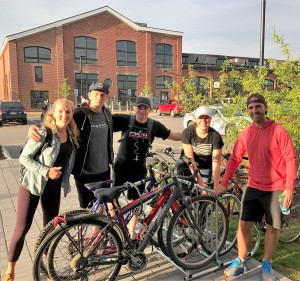 You know the adage touted by many Mainers old and new, “You can’t get there from here”. Well, because of forward thinking Maine companies such as Thompson’s Point, that paradigm is starting to shift.
You know the adage touted by many Mainers old and new, “You can’t get there from here”. Well, because of forward thinking Maine companies such as Thompson’s Point, that paradigm is starting to shift.
Since the project began in 2009, Thompson’s Point has evolved from a derelict 30-acre former railyard into Portland’s dynamic new mixed-use neighborhood, bringing together a wide variety of great Maine companies and family-focused entertainment along with socially and environmentally minded smart growth urban development.
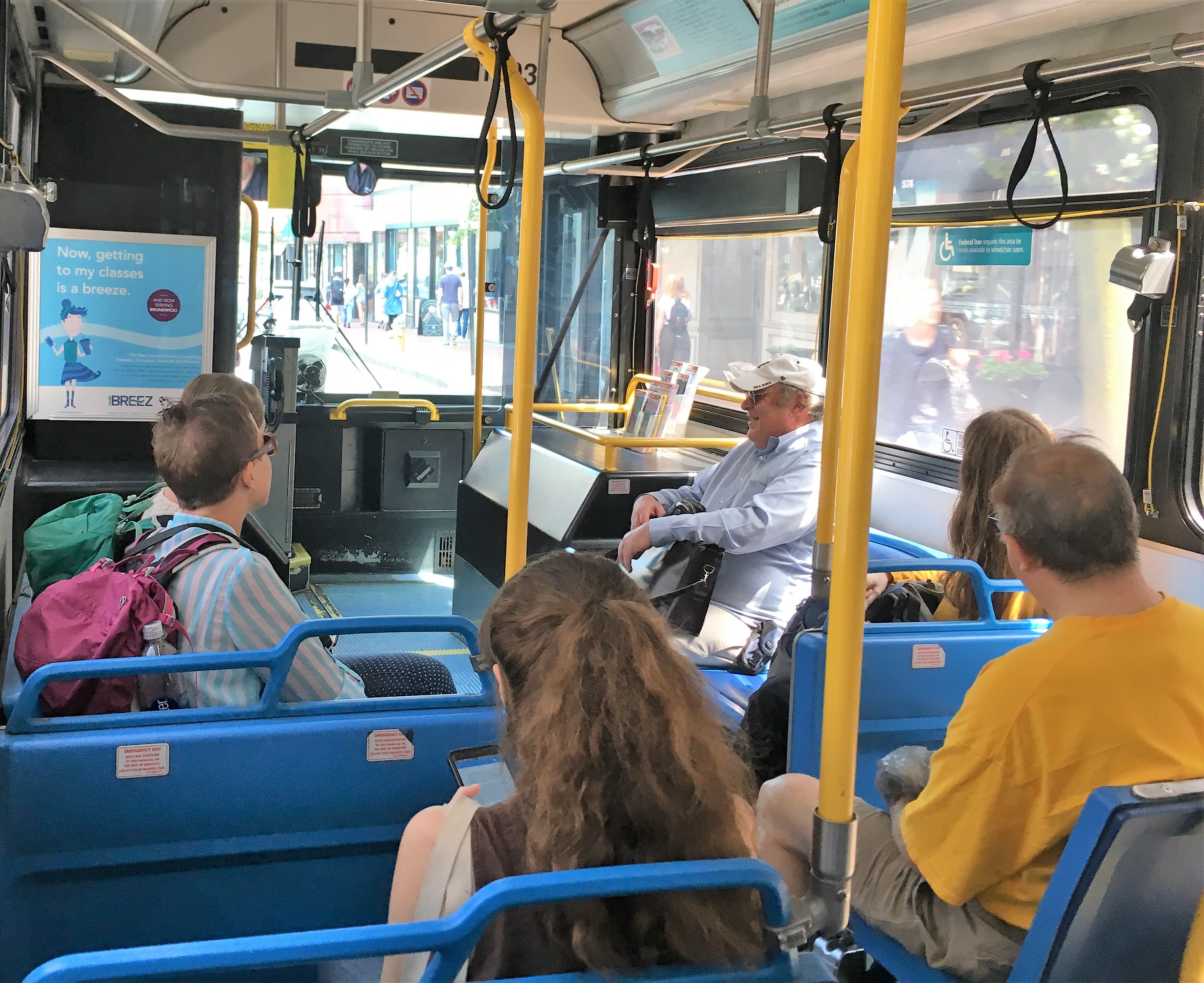
As part of this thoughtful approach to development, the ownership and management teams have been working towards setting themselves apart as a destination that is leading the charge in reducing drive-alone transportation methods and encouraging the use of bikes, carpooling and public transportation by constructing a well laid Transportation Demand Management Plan.
 Turns out, this strategy has not only led to a more thoughtful approach to traffic in Southern Maine, but has also gained the company national recognition as Best Site with Best Workplaces for Commuters. This makes it one of the top places to visit, work and live for visitors and commuters, offering exceptional transportation options and benefits that meet the National Standard of Excellence criteria. Thompson’s Point is one of only two companies in the entire state of Maine to earn such recognition.
Turns out, this strategy has not only led to a more thoughtful approach to traffic in Southern Maine, but has also gained the company national recognition as Best Site with Best Workplaces for Commuters. This makes it one of the top places to visit, work and live for visitors and commuters, offering exceptional transportation options and benefits that meet the National Standard of Excellence criteria. Thompson’s Point is one of only two companies in the entire state of Maine to earn such recognition.
“Since we began the project in 2009, back before Uber and Lyft were verbs, we’ve been intrigued with the transit-oriented development possibilities that Thompson’s Point presents,” said Jed Troubh, an owner and principal with Thompson’s Point.
 “With the Portland Transportation Center, METRO, Portland Trails, the Portland International Jetport, and I-295 all literally right next door, and with the prospect of water connectivity from the Point, we have just about every mode of transit available to us and our tenants and guests,” Troubh said. “It has been an exciting process to try and continue to be innovative with respect to building partnerships with all of our stakeholders and transit providers to help reduce single occupant vehicle use while making the experience of visiting the Point enjoyable and efficient.”
“With the Portland Transportation Center, METRO, Portland Trails, the Portland International Jetport, and I-295 all literally right next door, and with the prospect of water connectivity from the Point, we have just about every mode of transit available to us and our tenants and guests,” Troubh said. “It has been an exciting process to try and continue to be innovative with respect to building partnerships with all of our stakeholders and transit providers to help reduce single occupant vehicle use while making the experience of visiting the Point enjoyable and efficient.”
 Chris Thompson, co-owner and fellow principal with Thompson’s Point, notes that, “Transit oriented development at a multifaceted place like Thompson’s Point is an active listening and learning process. The way we use transit and our experience navigating the worlds of work and recreation are changing all the time — it has been an enlivening challenge for us to try and continue to serve the needs of all of the various patrons, partners, and visitors who make up our neighborhood. We owe a lot to our consultant, Sarah Cushman of Cushman Transportation Consulting LLC who has constantly challenged us, as Samuel Beckett said, to ‘fail, fail again, fail better’ and keep focused on how to continually rethink and try and improve our transit efforts at the Point.”
Chris Thompson, co-owner and fellow principal with Thompson’s Point, notes that, “Transit oriented development at a multifaceted place like Thompson’s Point is an active listening and learning process. The way we use transit and our experience navigating the worlds of work and recreation are changing all the time — it has been an enlivening challenge for us to try and continue to serve the needs of all of the various patrons, partners, and visitors who make up our neighborhood. We owe a lot to our consultant, Sarah Cushman of Cushman Transportation Consulting LLC who has constantly challenged us, as Samuel Beckett said, to ‘fail, fail again, fail better’ and keep focused on how to continually rethink and try and improve our transit efforts at the Point.”
Cushman is a local sustainable transportation consultant and her firm is also a Partner Organization of the national Best Workplaces for Commuters program. “Thompson’s Point understands that the site will work best – and be most economically viable – if there are robust ways people can reach it,” Cushman said. “That applies to folks who are visiting, working there or living in one of the proposed residences.”

“I’m excited about Thompson’s Point’s ongoing work to reduce traffic congestion and support diverse transportation options, “ Cushman said. “Plus I’m thrilled about these first-ever awards for organizations in the State of Maine.”
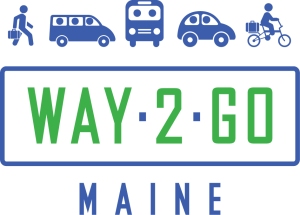 Rebecca Grover, Program Coordinator for GO MAINE, the statewide commuter assistance program shared, “Having sites with Best Workplaces for Commuters status in Maine supports the work that GO MAINE does with carpool ridematching, rewarding green commuters and our annual business-to-business challenge Way 2 GO MAINE. So we say, ‘Way 2 GO Thompson’s Point, keep up the good work!’”
Rebecca Grover, Program Coordinator for GO MAINE, the statewide commuter assistance program shared, “Having sites with Best Workplaces for Commuters status in Maine supports the work that GO MAINE does with carpool ridematching, rewarding green commuters and our annual business-to-business challenge Way 2 GO MAINE. So we say, ‘Way 2 GO Thompson’s Point, keep up the good work!’”
About Best Workplaces for Commuters
Originally launched by the National Center for Transit Research and the U.S. Environmental Protection Agency, Best Workplaces for Commuters is the national authority on recognizing and assisting multi-use sites and workplaces to provide exceptional transportation options and commuter benefits. More than a recognition program, Best Workplaces for Commuters program provides support needed to create and sustain a commuter benefit program, including online assessment tools, advisory services, case studies, tool-kits, web-based tools, webinars and training. Best Workplaces for Commuters represents over 200 multi-use sites and workplaces with Best Workplaces for Commuters designation representing over 734,000 employees. The Best Workplaces for Commuters program is managed by the Center for Urban Transportation Research (CUTR) at the University of South Florida with support from the National Center for Transit Research (NCTR) and the Florida Department of Transportation (FDOT). For more information: http://www.bestworkplaces.org/
For more information on Thompson’s Point: www.thompsonspointmaine.com
MAP Front Page Article: Transportation Demand Management at Work in Maine
This article appears in the Maine Association of Planner’s November 2017 Front Page.
One rainy evening this past spring I was at a birthday party for a friend and a woman I’d just met at the seltzer cooler asked me what I do for work. I stumbled around trying to explain I’m a Transportation Demand Management (TDM) consultant and what that entails. This is not unusual; I often wish we could come up with an easier definition for TDM. Even when we spell the words out it still makes people scratch their heads, including for many of us in the planning world.
What the Heck is TDM Again?
 So, quick review: Transportation Demand Management is an alternative to going through the time-consuming and exorbitantly expensive – not to mention environmentally degrading – process of widening roads or building new ones to deal with additional vehicle traffic, with the subsequent result of “induced demand” that fills up that new supply in very little time.
So, quick review: Transportation Demand Management is an alternative to going through the time-consuming and exorbitantly expensive – not to mention environmentally degrading – process of widening roads or building new ones to deal with additional vehicle traffic, with the subsequent result of “induced demand” that fills up that new supply in very little time.
Instead, TDM practice employs a little Yankee frugality and ingenuity to fix and manage our existing roads better and reduce the demand on them in the first place.
We can do that a number of ways but most boil down to three things:
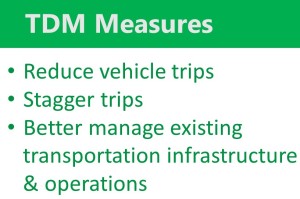 Reducing the number of drive-alone automobile trips to work and other destinations – for example, say co-workers Ben and Jeff carpool the 45 minutes each way every day from where they live in Hamden to where they work in Pittsfield
Reducing the number of drive-alone automobile trips to work and other destinations – for example, say co-workers Ben and Jeff carpool the 45 minutes each way every day from where they live in Hamden to where they work in Pittsfield- Staggering trips over different time periods, to avoid peak driving times – e.g., Jennifer’s workplace offers flextime and so she takes an early morning ferry from the island where she lives and then drives to work, arriving at 7am
 State-of-the-art transportation system and operations management – for example:
State-of-the-art transportation system and operations management – for example:
- the Portland Area Comprehensive Transportation System’s (PACTS) work with local municipalities to improve timing of traffic signals on high-traffic corridors (other regional planning organizations and municipalities are likely doing similar work across the state)
- prioritizing traffic signals for public transit
- sharing maintenance equipment between municipalities to speed up repairs, like traffic signal outages
These are key for enabling the safe and efficient movement of goods, services and people across the state and beyond. They also engage individual Mainers, businesses and local communities in strategies that make us more economically vibrant and sustainable for the long-term.
Most folks will just want the road widened, not knowing about induced demand. But with a never-ending backlog of many millions of dollars in current infrastructure maintenance and improvement projects and the climate-changing impacts of transportation emissions, Maine simply can’t afford to widen or build more roads. Through good dialogue with the people in our communities and by putting diverse practices to work locally and regionally, the fiscally conservative aspects of TDM have legs across the political spectrum.
Yeah, but… What Does That Really Look Like in Planning?
We do Transportation Demand Management work from various angles and many of you likely engage with it through local land use and transportation planning – including:
- bicycle and pedestrian or transit plans and implementing infrastructure improvements for each
- studying and implementing traffic system improvements
- encouraging density and mixed-use development in village or downtown areas when updating local comprehensive plans or village master plans
Really, most planning processes somehow involve at least a hint of TDM. (It’s a little horrifying to admit but I worked in transportation planning and promotion for almost five years before I really understood the sister field of land use planning – and its impact on everything I was striving for in terms of TDM.)
The other examples of Transportation Demand Management-related land use and transportation planning I’d like to discuss here are:
- Reducing or removing off-street parking minimums and creating parking maximums for new development or site renovations
- Strategic management of public on-street and off-street parking resources
- Required TDM Plans during the site review process for new development and commercial and institutional uses
Enabling Density Via Parking Reform – Bigger Picture TDM
As planners we are forward-thinking folks about this but just to be clear: the more densely we can develop the heart of our communities – including vibrant open spaces and gathering places – the friendlier and more viable it is for people to walk, bike and use current or future public transportation to reach local destinations. Reducing or removing requirements for off-street parking and introducing parking maximums are a significant strategy for permitting this needed density.
Density and reduced parking, in turn, lead to greater economic development returns. By ditching antiquated parking standards – and the poor revenue we get from land used for parking – our communities build wealth through more productive land uses like housing and businesses.
Parking often ends up being the linchpin for effective TDM work. I was speaking at the Maine Climate Conference recently and a member of the audience from a rural area asked for advice about ways to improve their local comprehensive plan. I suggested facilitating growth in village areas and removing parking minimums. Someone joked that parking isn’t really relevant to folks living out in the country. “I understand where you’re coming from,” I said. “But if I put a Dollar General in your community, will you require me to put in a standard number of spaces, even if they’re not really needed?”
To build local support to reduce or remove parking minimums and create parking maximums, we also have to be better at managing our current local parking resources – both on-street and off. Some examples are:
- If you have on-street parking and it’s more than 85% full (one space open per block), starting to charge for parking or making adjustments to existing prices – and if the municipality is using intelligent meters, price can be changed based on time of day to ensure 85% capacity;
- Encouraging and establishing shared parking agreements – e.g. a local company that leases some private residential parking for day-time use;
- Providing wayfinding and real-time messaging about space availability on-street and online – to help visitors find local parking resources that might not be on principal streets.
- Spending revenue from parking directly and visibly on improvements in our village or downtown areas – e.g., through beautification projects like flower planters that are also sidewalk furniture.
Planners Making Parking Reform Happen in Maine
 The good news is that practitioners like you in communities across the state are on it. As Carol Eyerman, our NNECAPA Maine State Director and MAP President shared recently, “The Town of Topsham reduced its off-street parking minimums last year and also allows for an “alternative plan,” (standards here) permitting developers to do their own parking assessment and alternate plan for parking and defend it to the Planning Board.”
The good news is that practitioners like you in communities across the state are on it. As Carol Eyerman, our NNECAPA Maine State Director and MAP President shared recently, “The Town of Topsham reduced its off-street parking minimums last year and also allows for an “alternative plan,” (standards here) permitting developers to do their own parking assessment and alternate plan for parking and defend it to the Planning Board.”
This is a great start. It still puts the burden on the developer, so a complete removal of parking requirements and the addition of parking maximums would be good next steps as the town becomes more comfortable with the results.
Ethan Croce, the Community Development Director for Falmouth, shared several pieces the town implemented a few years ago to reduce off-street parking and loading requirements. “Some of these are bolder than others,” Ethan reported, “but they include:
- Reduced parking requirements for office and retail uses from 5 spaces to 2 spaces per 1,000 square feet of floor area;
- Reduced parking requirements for attached dwelling units from 2.5 spaces to 1 space per dwelling unit;
- Allowed the Planning Board to reduce off-street parking requirements for any use if the Board determines there is available on-street parking nearby;
- Expanded the allowance for shared parking. The ordinance formerly required shared parking lots to be within 100 feet of each establishment sharing parking. That distance was expanded to allow shared parking lots within 1,300 feet of each establishment;
- Removed the requirement to provide off-street loading berths associated with non-residential uses. Instead, the Planning Board has the flexibility to determine where and how loading may occur. This can include, without limitation, in an existing parking lot, drive aisle, on-street, etc.”
“The Windham Town Council is in the midst of looking at draft ordinance language that removes all off street parking and loading bay requirements in town,” shared Town Planner Ben Smith. “The parking changes are part of a larger package of ordinance changes they are going to send to the Planning Board soon to implement the vision of the 21st Century Downtown Plan.”
“Rather than making an either/or decision that involves whether we adopt a Character/Form Based Code (FBC) [draft ordinance language here] or a more modest/incremental set of changes [draft alternate language here],” Smith reported, “the Town Council is leaning toward a 2-track approach with potential adoption of both the incremental changes and the FBC as options for developers to consider. In this vision, a developer would have the ability to pick either set of rules to design to in the short term and then a after a year or so, the FBC would become the only set of rules going forward.”
“Either option leaves parking up to the developer – no minimums required,” Smith continued. “I hope that we’ll have these changes voted on by the Council before the end of the year.”
Every once in a while as planners, we run into a project where parking isn’t provided (or doesn’t end up getting built) where it might actually be useful. Jim Fischer, formerly of the Hancock County Regional Planning Commission and now working as an independent planning consultant at Jim Fisher Regional Population, Health and Planning reached out to share the following experience. “I worked on a local impact analysis for a proposed visitor center in Ellsworth, including provisions for some parking. The site also would have likely promoted bicycling and transit use.”” Fisher reported.
“The project never received funding to move forward and I wish it had. We have subsequently extended the Sunrise Trail to High Street, but not created any parking for it. As a result, the folks arriving by ATV and snowmobile are slipping into corners of other parking lots and hoping not to be a problem for the business owners.” (Note, the Bureau of Parks and Lands could seek formal shared parking agreements with local businesses that might ease the problem and encourage collaboration – and patronage – between ATV and snowmobile clubs and area commercial interests.)
However, it’s more common for us to build too much parking – sometimes even when removing parking minimums. This brings us to the value of parking maximums. Since developers generally don’t have the time or money to do their own parking analysis, they pull ready-made parking numbers from the Institute of Transportation Engineers (ITE) Parking Generation manual – which even ITE recognizes needs updates and additional data from rural, suburban and urban contexts. It’s the classic “the standard made me do it” situation. Of course, one size does not fit all and so we often end up with parking excess.
We may have a stellar example of a municipality that is using parking maximums out there in Maine and I just don’t know of it yet (please let MAP know if you do!) One modified example of a maximum can be found in the City of Portland. Portland has reduced some of its parking minimums, at least on the Peninsula, but still generally has off-street parking requirements. This proviso, however, is also part of its land use code: “Developments proposing to exceed minimum parking requirements by 10% or more must demonstrate through a parking analysis that the amount of parking is appropriate for the proposed use of the site.” City of Portland Code of Ordinances, Land Use Chapter 14, Sec. 14-526
Specific Transportation Demand Management Plans
That’s enough parking discussion for now – let’s talk about site-specific Transportation Demand Management plans. Individual sites in a community don’t exist in a vacuum on their own but many people in the community might see them as just that. As planners, you are the heroes that see the full picture – the developers’ goals for a particular project and the broader community context and vision for growth.
 In addition to other site planning considerations, such as architecture, location of the building on the site, and integration with the surrounding neighborhood, we can also request an applicant develop a vehicle trip-reduction or TDM plan to reduce the site’s traffic and parking impacts.
In addition to other site planning considerations, such as architecture, location of the building on the site, and integration with the surrounding neighborhood, we can also request an applicant develop a vehicle trip-reduction or TDM plan to reduce the site’s traffic and parking impacts.
In the City of Portland, a Transportation Demand Management Plan and its subsequent implementation is required under the land use ordinance (see sidebar on next page) in order to reduce the impact of vehicle trips to sites of a particular size. As part of these plans, the applicant follows the city’s technical standards, establishing trip reduction targets and employing strategies to reach them, such as:
- restricting parking, raising the cost of parking, offering preferential parking for carpools and/or offering parking cash-outs to encourage multi-modal trips
- offering public transit, bicycling and car/vanpool subsidies and cash incentives
- offering the federal public transit, vanpool and bicycle commuting fringe benefit
- marketing TDM to relocated and new hires
- offering a company account for use of the local car share for daytime trips
- connecting employees with GO MAINE, the statewide commuter assistance program, and the Emergency Ride Home benefit
- making on or near-site infrastructure improvements like sidewalks, crossings, bicycle and transit facilities to improve multi-modal access to the site
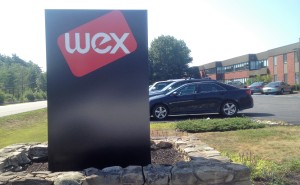 The ordinance is applied to diverse site uses. For example, in recent months I’ve worked on the TDM plan for the Baxter Academy of Science & Technology – a charter high school with 60 staff and growing to 400 students that is moving from its original location near the waterfront to the Bayside neighborhood. Another example is for a commercial office space, like the TDM plan for the WEX global headquarters I’m working on, to facilitate the company’s move from out near the mall in South Portland to the Portland eastern waterfront.
The ordinance is applied to diverse site uses. For example, in recent months I’ve worked on the TDM plan for the Baxter Academy of Science & Technology – a charter high school with 60 staff and growing to 400 students that is moving from its original location near the waterfront to the Bayside neighborhood. Another example is for a commercial office space, like the TDM plan for the WEX global headquarters I’m working on, to facilitate the company’s move from out near the mall in South Portland to the Portland eastern waterfront.
Similarly, it’s been a great experience helping update the TDM plan for the St. Lawrence Arts Center to build a new 400-seat addition without adding on-site parking, since it was originally built as a neighborhood church to which Munjoy Hill residents walked. The St. Lawrence is an excellent example of leveraging TDM efforts to help with transit expansion. Under the conditional rezoning agreement and TDM plan, the venue will pay the Greater Portland Transit District (METRO) $70,000 per year for extended bus service from downtown to the East End. This will serve both patrons and the larger community.
TDM planning is showing up elsewhere as well. PACTS and the City of South Portland developed a TDM plan for Southern Maine Community College (SMCC) to provide more transportation choice for commuting students and also to mitigate the impact of student driving and vehicles on South Portland’s East End. Among the key recommendations were a number regarding improving access to transit. From all appearances current bus ridership is solid and this was echoed by Tex Hauser, Planning & Development Director of the City of South Portland.
 Alex Jaegerman has brought his TDM experience as Planning Director for the City of Portland to his work as the Director of Planning & Development in Yarmouth – requiring TDM plans as part of the site review process for Tyler Technologies’ expansion and the new Patriot Insurance location. “In practice it’s a soft requirement for now, but we’ve done it,” Jaegerman shared. “We’ll need to circle back around with them as part of the Certificate of Occupancy.”
Alex Jaegerman has brought his TDM experience as Planning Director for the City of Portland to his work as the Director of Planning & Development in Yarmouth – requiring TDM plans as part of the site review process for Tyler Technologies’ expansion and the new Patriot Insurance location. “In practice it’s a soft requirement for now, but we’ve done it,” Jaegerman shared. “We’ll need to circle back around with them as part of the Certificate of Occupancy.”
Having the capacity to monitor the plans and insist on a good faith effort at implementing them is one of the trickier pieces for municipalities. Part of that has to do with the fact that the developer is required to submit the plan, but it’s the tenant who must implement it. Another issue is staff time and capacity for follow up. For a number of years the Department of Public Works monitored the plans in Portland and now they’ve moved to the Planning Division for more concerted oversight.
Senior Planner Nell Donaldson has been tasked with reviewing where existing plans stand and helping further their implementation. “The city has built a strong foundation and this is a good time for advancing the TDM Program and moving the ball forward. We’re seeing more and more development and people are more open to doing things a little differently. There’s also interest and support here at City Hall,” Donaldson said.
“However, at the heart of it, we still need to find time to dedicate staff resources to really make it work well.” Donaldson reports. “Ultimately a private-public partnership like a Transportation Management Association (TMA) would most likely serve all of us better – both on the city and the private sector side.” (Note: The Greater Portland Council of Governments is currently exploring the feasibility of a local TMA, which can act as a broker for services like implementation help for TDM plans, improved transit service, parking management and employer shuttles. TMAs also often work best if driven primarily by local businesses.)
Sharing the TDM Love
 Another avenue for municipalities, planning organizations and private sector planners to show TDM leadership is via promotional efforts, like those of GO MAINE – the statewide commuter assistance program funded and administered by the Maine Turnpike Authority, with additional funding from the MaineDOT. GO MAINE recently threw down the marketing gauntlet with its pilot Way 2 GO MAINE Commuter Challenge, a three week build-a-new-habit campaign that ran this October 1st-21st. (Full disclosure: I was contracted to help develop and deliver the challenge.)
Another avenue for municipalities, planning organizations and private sector planners to show TDM leadership is via promotional efforts, like those of GO MAINE – the statewide commuter assistance program funded and administered by the Maine Turnpike Authority, with additional funding from the MaineDOT. GO MAINE recently threw down the marketing gauntlet with its pilot Way 2 GO MAINE Commuter Challenge, a three week build-a-new-habit campaign that ran this October 1st-21st. (Full disclosure: I was contracted to help develop and deliver the challenge.)
Organizations across the state pitted their workplace against others for how many of their employees carpooled, took the bus or train, or bicycled or walked to work over those twenty-one days. Team champions at employers offered simple encouragement to engage their co-workers and tracked their organization’s progress on the Way 2 GO MAINE leaderboard online. Participating employees joined GO MAINE if they weren’t members already (which also gives them access to the Emergency Ride Home benefit), logged their trips, received incentives and posted photos of their commutes on social media – competing for the most alternate transportation trips recorded, most new GO MAINE members and most team spirit.
A number of businesses jumped right in – for example, Tyler Technologies (required to do a TDM plan in Yarmouth as mentioned above) won 1st Place for Most Greener Trips for medium size organizations. However, municipalities and regional planning organizations also gave a great showing. The City of Portland won Most New Members in the large organization category and the Greater Portland Council of Governments was 2nd in New Members and 3rd in Greener Trips – plus it submitted an amazing video for Most Team Spirit.
“The City of Portland’s active participation in Way 2 GO MAINE helps us show the city is truly committed to our larger TDM work and that we’re walking the talk,” Nell Donaldson reported.
The Touchy-Feely Part to All This
This summer I finally decided to come up with an elevator speech to describe my TDM work. I did some writing and brainstorming and talking with folks and came up with, “I help people have happy commutes.” That sounds pretty sentimental for a technical field.
However, enabling happy commutes is at the heart of this work. It’s what I’ve loved about it for years and what feeds me most. As planners we have the chance to help people and businesses and communities navigate transportation choices, use their own creativity to make them work and watch them bask in the many benefits – financial savings, social connection, reduced environmental impacts and improved health.
Throwing Down the Gauntlet – businesses challenge each other for Way 2 GO MAINE!
 “Make your commutes count October 1st-21st!” was the rallying cry of the Way 2 GO MAINE Commuter Challenge this past month. Cushman Transportation Consulting, LLC was thrilled to co-develop and deliver Maine’s first ever business-to-business challenge with GO MAINE, the statewide commuter assistance program.
“Make your commutes count October 1st-21st!” was the rallying cry of the Way 2 GO MAINE Commuter Challenge this past month. Cushman Transportation Consulting, LLC was thrilled to co-develop and deliver Maine’s first ever business-to-business challenge with GO MAINE, the statewide commuter assistance program.
Way 2 GO MAINE was a three week, build-a-new-habit campaign – creating friendly competition between organizations across the state to see how many employees could walk, bike, take the bus or train or carpool to work. It was also a way to celebrate those activities, reward folks who are already out there doing them and inspire other Mainers to do the same!
The three week, build-a-new-habit campaign engaged team champions for each employer who offered simple encouragement to their fellow employees and posted photos and videos on social media with the hashtag Way2GOMAINE.
Participating employees logged their trips, received incentives and watched their workplace zoom up the leaderboard.
Organizations competed for:
- most greener transportation trips recorded
- most new GO MAINE members
- and most team spirit!
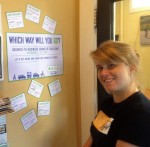 Stalwart allies like the Bicycle Coalition of Maine started signing employees up early with campaign pledge cards and posting them at the office.
Stalwart allies like the Bicycle Coalition of Maine started signing employees up early with campaign pledge cards and posting them at the office.
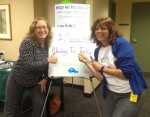 We had a great time with the kick off of the campaign at local large employer UNUM on Monday the 2nd! It was inspiring to speak with staff there – some who already bike or carpool to work and others who are curious about trying the bus or other green commutes.
We had a great time with the kick off of the campaign at local large employer UNUM on Monday the 2nd! It was inspiring to speak with staff there – some who already bike or carpool to work and others who are curious about trying the bus or other green commutes.
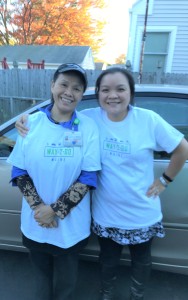 We designed and distributed event materials and swag and had fun seeing some folks in action when it worked to drop them off in person.
We designed and distributed event materials and swag and had fun seeing some folks in action when it worked to drop them off in person.
Workplaces offered their own rewards, too. For example, the City of Portland gave out gift cards to top participating employees as part of its City Fit! program. And MEMIC offered $250 to the first 10 employees who signed up for a bus pass or carpool parking in October and gave up a drive-alone parking space – and boy did employees take them up on it.
Maybe the best part was the fun and inspiration everyone shared via photos and videos. Happy commutes all around! Here’s a sampling:
And not to be missed are these fabulous videos:
Now, for the winners! All winning organizations were awarded a donation made in their name to one of three organizations of their choice that help improve air quality: American Lung Association, Arbor Day Foundation, and the Audubon Society.
 We had a great time distributing awards to the winners and Rebecca Grover of GO MAINE even presented me with a Most Awesome Consultant Award. We had a blast working together and are looking forward our next go at it.
We had a great time distributing awards to the winners and Rebecca Grover of GO MAINE even presented me with a Most Awesome Consultant Award. We had a blast working together and are looking forward our next go at it.
If you participated in Way 2 GO MAINE, please complete this quick survey (takes less than 5 minutes) to help us make it even better next year!
Maine Sunday Telegram: greening your home office – including killing the commute
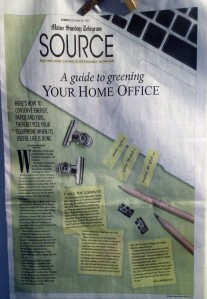 Many thanks to Ray Routhier for this great article in the Maine Sunday Telegram’s Source section on greening our home offices. I know I learned some new things for my home-based work space!
Many thanks to Ray Routhier for this great article in the Maine Sunday Telegram’s Source section on greening our home offices. I know I learned some new things for my home-based work space!
Ray called recently to ask me about transportation-related greening for folks working from home – so I appreciate the perspectives he shared from that conversation, too (image below)!
Carpool Love
A version of this column was published in the Maine Sunday Telegram’s Source section.
Most of us know the benefits of carpooling. Sharing rides cuts our household transportation costs. That’s significant when 30% of the average Maine household’s income (and about 40% for our low income households) goes to pay for the cars and trucks in our driveways. Carpooling also reduces our greenhouse gas and other vehicle emissions. However, the most important benefit may be that carpooling makes us happier: strengthening our human connections, reducing stress and building community resiliency.
 My grandmother’s first cousin, Frances Burgess, passed away this summer at age 96; she had a sweet sense of humor and was one of my all-time family favorites. She also was a carpooler.
My grandmother’s first cousin, Frances Burgess, passed away this summer at age 96; she had a sweet sense of humor and was one of my all-time family favorites. She also was a carpooler.
Frances and her husband raised their family in a small cape in the midst of farmland in Saco. They had one car and worked staggered shifts at the Portsmouth Naval Shipyard. When Frances headed to work she left her two daughters in the care of her mother and carpooled with a group of neighbors. She was tickled by the friends she made and stories she heard over the years riding together. There were more men in the carpool than women, she explained, and it was a unique opportunity for friendships in an era when time with the opposite gender was rarer.
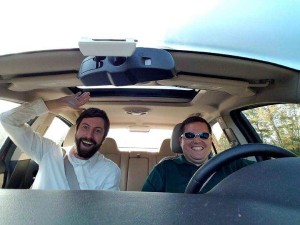 I talked recently with Ben Connors who lives in Hampden and works in Pittsfield and carpools the hour and a half every day with his colleague Jeff (their photo at right). “We share the cost of the car – the wear and tear and gas – so that’s a direct benefit. But you also get to unwind with your co-worker at the end of the day,” Ben said. “You can talk about what you’re working on and they offer a different perspective on things. By the time you’ve gotten home you’ve gotten all that stuff off your chest.”
I talked recently with Ben Connors who lives in Hampden and works in Pittsfield and carpools the hour and a half every day with his colleague Jeff (their photo at right). “We share the cost of the car – the wear and tear and gas – so that’s a direct benefit. But you also get to unwind with your co-worker at the end of the day,” Ben said. “You can talk about what you’re working on and they offer a different perspective on things. By the time you’ve gotten home you’ve gotten all that stuff off your chest.”
I connected with Ben because I met his former rideshare buddy, Rachel Porter, at a work event last fall. Rachel and Ben carpooled to work for three years before she recently moved and she shared similar thoughts about the benefits of ridesharing.
“My new commute still takes half an hour and I would definitely carpool again,” Rachel said in a recent interview. “I also miss it during bad weather – having someone else looking at everything going on around you when you’re concentrating so hard on the road in front of you.”
Carpooling like Frances did and Ben does used to be far more commonplace in Maine and around the country, when most families owned only one car or none at all. It took some Yankee ingenuity to make things work and get where you needed to go.
Maine is primarily a rural state – the most rural in the country according the 2010 U.S. Census, based on the number of communities with populations less than 2500. Many Mainers would like access to public transportation but the spread out-nature of our homes and towns decreases the viability of strong transit networks with frequent service.
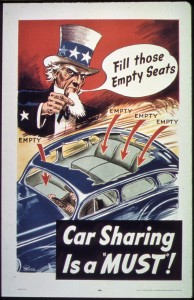 Years ago, I remember a staff person from the GO MAINE statewide commuter assistance program showing a WWII era Uncle Sam carpooling propaganda poster and saying, “The best option for public transportation many of us have are the empty seats in our cars.” That’s still right.
Years ago, I remember a staff person from the GO MAINE statewide commuter assistance program showing a WWII era Uncle Sam carpooling propaganda poster and saying, “The best option for public transportation many of us have are the empty seats in our cars.” That’s still right.
Carpooling trends have decreased over time. Households started buying more cars in the 1950 and, by the new millenium, almost half of car-owning families had two or more vehicles and more than 90 percent of American households had at least one.
Carpooling peaked in 1980 at the end of the Middle East oil crises. At that time almost 20% of Americans shared rides to work. Now it’s a little less than 10%. About 9% of Mainers carpool. (Of note: people working in construction have some of the highest rideshare rates.)
Many of us don’t carpool because we think it won’t work for us. “I have kids to pick up, I have to run errands after work, I just want some peace and quiet, what if my aging parent suddenly needs me?” Or maybe we tried it once back in 1992 and it didn’t work for one reason or another. If either of these scenarios speak to you, I say give it a(nother) try.
It doesn’t have to be all or nothing. Broach the subject with a co-worker to experiment for a couple weeks. Ask a neighbor who is going your way to try it for one or two days a week instead of every day.
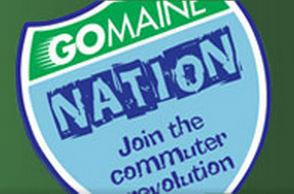 If you don’t know anyone making a similar trip, do the quick sign-up and try out GO MAINE’s recently revamped and state-of-the-art ridematching service. It shows photos and profiles of people who live near you or who commute to near your destination.
If you don’t know anyone making a similar trip, do the quick sign-up and try out GO MAINE’s recently revamped and state-of-the-art ridematching service. It shows photos and profiles of people who live near you or who commute to near your destination.
“It’s like Match.com for carpoolers,” said Rebecca Grover, the Program Coordinator, during a recent conversation.
GO MAINE also offers rewards to those who log their trips walking to work, bicycling, using public transportation and carpooling. And if you use a smartphone, all this has just become easier with the new GO MAINE app.
One of the best parts of being an active GO MAINE member is the Emergency Ride Home Benefit. It’s a free taxi ride with a registered taxi company or Enterprise Rent-a-Car home in the event there’s a family crisis, you get unscheduled overtime or have another unforeseen workday emergency.
Think about rides in your personal life that you can share, too, if you don’t already. Carpooling with other people’s kids to soccer practice, sharing a ride to a community meeting or your place of worship.
If you’re hosting an event, consider using something like groupcarpool.com to enable folks to share rides. It’s a national app and online service specifically designed for one-time occasions. It’s free for an event with up to 50 participants and charges $10 for an event of up to 500 participants, with no registration or fee required for attendees. That’s an attractive and low-barrier option for people to try. Plus there’s no better ice-breaker for a conference or other occasion than for participants to have already built community before they even arrive.
Enough of the nuts and bolts though. Moral of the column: carpool and live to 96. It’s that simple.
More Suggestions
 Dip your toe in via October’s Way 2 GO MAINE business-to-business commuter challenge! Businesses and organizations across the state are encouraged to pit their workplace against others for how many of their employees carpool, bicycle, use transit or rail, or walk to work. During this 21-day campaign participating employees log their trips, receive incentives and compete for the most green trips, most new GO MAINE members and most team spirit! Log your trips if you’re already a GO MAINE member or join at org (Full disclosure: I’ve been hired as a consultant to help with the campaign.)
Dip your toe in via October’s Way 2 GO MAINE business-to-business commuter challenge! Businesses and organizations across the state are encouraged to pit their workplace against others for how many of their employees carpool, bicycle, use transit or rail, or walk to work. During this 21-day campaign participating employees log their trips, receive incentives and compete for the most green trips, most new GO MAINE members and most team spirit! Log your trips if you’re already a GO MAINE member or join at org (Full disclosure: I’ve been hired as a consultant to help with the campaign.)- For some fun carpool love, check out James Corden’s carpool karaoke videos from The Late Late Show. It’s hard to watch only one!

